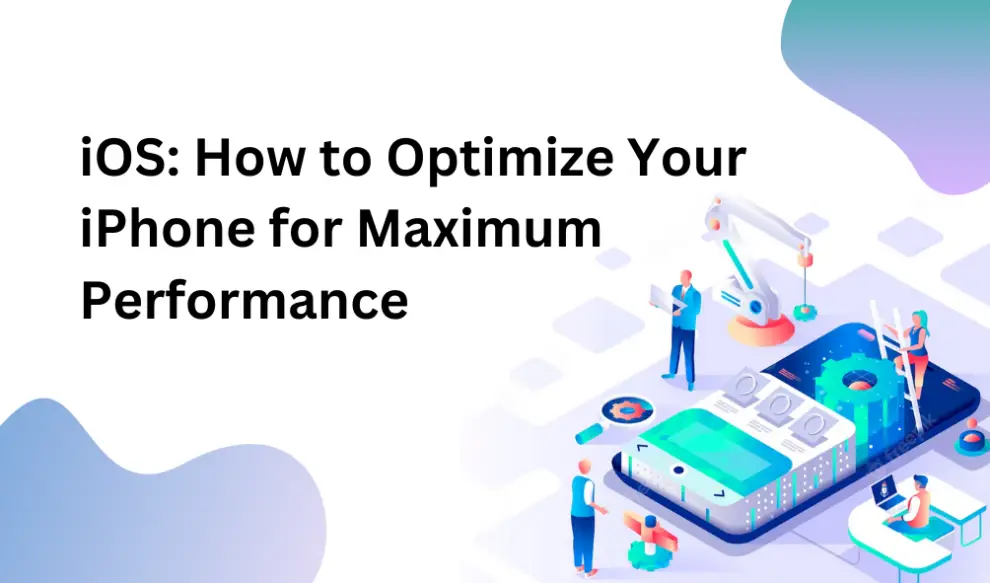Are you experiencing slow performance, short battery life, or running out of storage on your iPhone? Optimizing your device for maximum performance can help you solve these issues and get more out of your device. This guide will walk you through the steps you can take to optimize your iPhone, including clearing out unnecessary data and files, shutting down background apps, managing notifications and location services, updating your iOS and apps, keeping your iPhone cool, adjusting visual effects and motion, using low power mode, and backing up your iPhone data. By following these tips, you can improve performance, extend battery life and have a better experience with your device.
Understanding iPhone Optimization:
To optimize your Apple iPhone for maximum performance, it’s important to understand the basics of how your device works. This includes understanding how storage space, RAM, and processing power affect the performance of your phone. By understanding these basics, you’ll be better equipped to make decisions about which apps and settings to keep, and which to eliminate.
Clearing Out Unnecessary Data and Files:
Clearing out unnecessary data and files is an effective way to optimize your iPhone’s performance. The more data and files your iPhone has to manage, the more resources it will consume, which can cause your phone to slow down and drain your battery faster. By clearing out unnecessary data and files, you can free up space on your phone, improve performance, and extend battery life.
You can also manage your storage space by going to “Settings” > “General” > “iPhone Storage.” Here, you will see a breakdown of your storage usage and can delete apps or files that are taking up too much space.
Shutting Down Background Apps:
Shutting down background apps is an important step in optimizing your iPhone’s performance. Background apps can continue to run and take up valuable resources, even when you’re not actively using them. This can cause your phone to slow down, drain your battery faster and consume more data. Some apps may need to run in the background in order to function properly, for example, navigation apps.
Managing Notifications and Location Services:
Managing notifications and location services is an important step in optimizing your iPhone’s performance. Notifications can take up valuable resources and drain your battery. To manage notifications, go to the “Settings” app and then tap on “Notifications”. You can turn off location services altogether or choose which apps are allowed to access your location.
Updating Your iOS and Apps:
Updating your iOS and apps is an important step in optimizing your iPhone’s performance. Software updates often include bug fixes and performance improvements that can help your phone run more smoothly. Keeping your apps up to date will also ensure that you have access to the latest features and security updates.
Keeping Your iPhone Cool:
Overheating can cause your device to slow down and can even damage the internal components. To keep your iPhone cool, it’s important to avoid using it in direct sunlight or in a hot car. Use a cooling pad or stand to keep your phone cool when you’re using it for extended periods of time.
Adjusting Visual Effects and Motion:
You can also optimize your iPhone’s performance by adjusting the visual effects and motion settings. Go to Settings > General > Accessibility > Reduce Motion to turn off the parallax effect and other animations.
Using Low Power Mode:
Using Low Power Mode can help extend the battery life of your iPhone. The feature can be found in the Settings app and can be manually turned on or set to automatically turn on when your battery is low. It’s a great feature to use when you don’t have access to a charger or want to conserve battery life.
Backing Up Your iPhone Data:
Backing up your iPhone data is an important step in optimizing your device’s performance. There are a few ways to back up your iPhone, including using iCloud or iTunes. This ensures that your contacts, photos, and other important data are safe in case something goes wrong.
Final Words
Optimizing your iPhone can help you improve performance, extend battery life and have a better experience with your device. These tips include clearing out unnecessary data and files, shutting down background apps, managing notifications and location services, updating your iOS and apps, keeping your iPhone cool, adjusting visual effects and motion, using low power mode, and backing up your iPhone data. Shutting down background apps is an important step in optimizing your iPhone’s performance. Notifications can take up valuable resources and drain your battery. To manage notifications, go to the “Settings” app and then tap on “Notifications”. You can turn off location services altogether or choose which apps are allowed to access your location.







